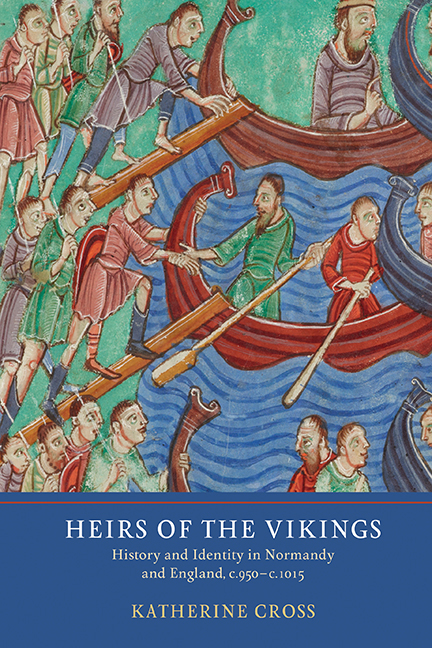Book contents
- Frontmatter
- Dedication
- Contents
- List of illustrations
- Acknowledgements
- Abbreviations
- Note on terminology
- Map
- Introduction: The Problem of Viking Identity
- 1 Genealogy: Building a Viking Age Dynasty
- 2 Origin Myths: A People for a Dynasty
- 3 Hagiography I: Ruin and Restoration
- 4 Hagiography II: Saintly Patronage
- 5 Charter Narratives: Normans, Northumbrians and Northmen
- Conclusion: Viking Age Narratives and Ethnic Identities
- Appendix 1 The Date of Fulbert's Vita Romani
- Appendix 2 The Dates of the Latin Vita Prima Sancti Neoti and the Old English Life of St Neot
- Bibliography
- Index
Introduction: The Problem of Viking Identity
Published online by Cambridge University Press: 19 July 2019
- Frontmatter
- Dedication
- Contents
- List of illustrations
- Acknowledgements
- Abbreviations
- Note on terminology
- Map
- Introduction: The Problem of Viking Identity
- 1 Genealogy: Building a Viking Age Dynasty
- 2 Origin Myths: A People for a Dynasty
- 3 Hagiography I: Ruin and Restoration
- 4 Hagiography II: Saintly Patronage
- 5 Charter Narratives: Normans, Northumbrians and Northmen
- Conclusion: Viking Age Narratives and Ethnic Identities
- Appendix 1 The Date of Fulbert's Vita Romani
- Appendix 2 The Dates of the Latin Vita Prima Sancti Neoti and the Old English Life of St Neot
- Bibliography
- Index
Summary
After Edward the Confessor's death in 1066, three men claimed the English throne: William of Normandy, Harold Godwineson and Harald Hardrada (Haraldr Sigurðarson). Teachers and historians alike identify these claimants as Norman, English and Norwegian respectively. But Viking Age identities were not this simple. The conflicts of 1066 were one focused moment in a long history of shifting ethnic relations, which were perceived differently by various participants.
William presented himself as a Norman, Normannus. But, had he been asked, Harold Godwineson would probably have identified William as Francus rather than Normannus, reserving that label for Harald Hardrada. For the inhabitants of England, Normannus retained its original meaning of a man from the north. Harald Hardrada, for his part, would have recognized himself in that term, but for him it now took on a new distinction: in his praisepoetry, as Nóregs dróttinn (the lord of Norway), he was king of the Nor.me.r – literally, the Northmen, but in this context distinguishing the Norwegians from the Danes. The differing terminologies, and especially the overlapping and sometimes contradictory meanings of ‘Northman’ as an ethnonym, arose during the Viking Age. They reveal a wider issue: divergent, and highly political, perceptions of the value of viking heritage.
For, had the claimants in 1066 been asked who among them was of viking blood, the distinctions would have become even more blurred. Harald Hardrada is the obvious candidate. Scholars have called Harald ‘one of the last of the Vikings’: prior to becoming king of Norway, he was a Varangian mercenary and raider in Russia and Byzantium. Historians have surmised that Harald Hardrada attacked England near York because it had been the centre of a tenth-century viking kingdom, and he probably expected the people there to be more receptive to his rule. But William the Conqueror also called himself Normannus because of his viking ancestors. William traced his descent and ducal authority from his great-great-great-grandfather, Rollo the viking; the people he ruled over were still called Normanni because of their viking origins. Even Harold Godwineson, renowned as the last ‘native’ Anglo-Saxon king of England, was half Danish: his mother was from Denmark and closely linked to the family of Swein Forkbeard and Cnut the Great, the viking kings. But it was by promoting his status as a leading Englishman that he became king.
- Type
- Chapter
- Information
- Heirs of the VikingsHistory and Identity in Normandy and England, c.950–c.1015, pp. 1 - 24Publisher: Boydell & BrewerPrint publication year: 2018



